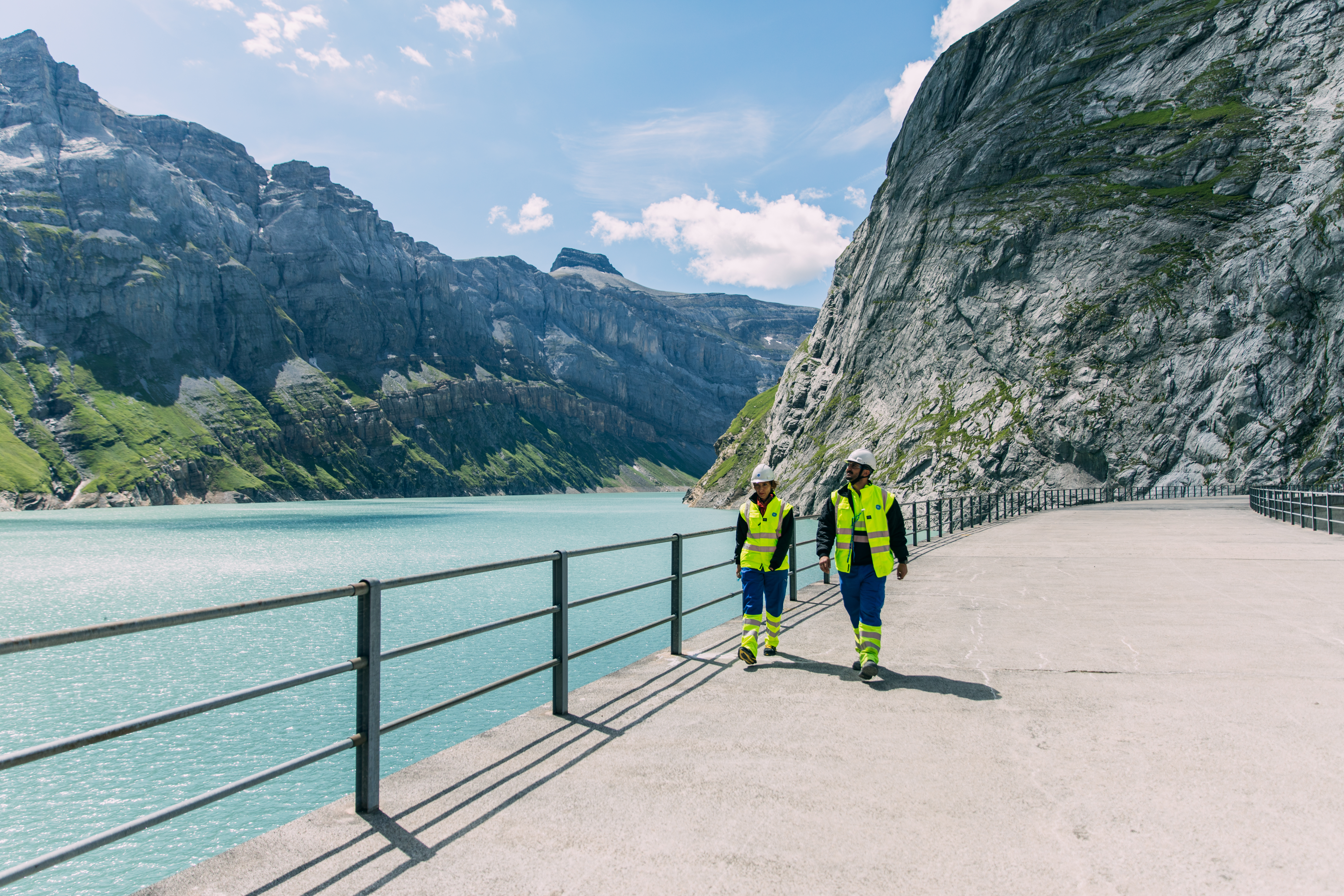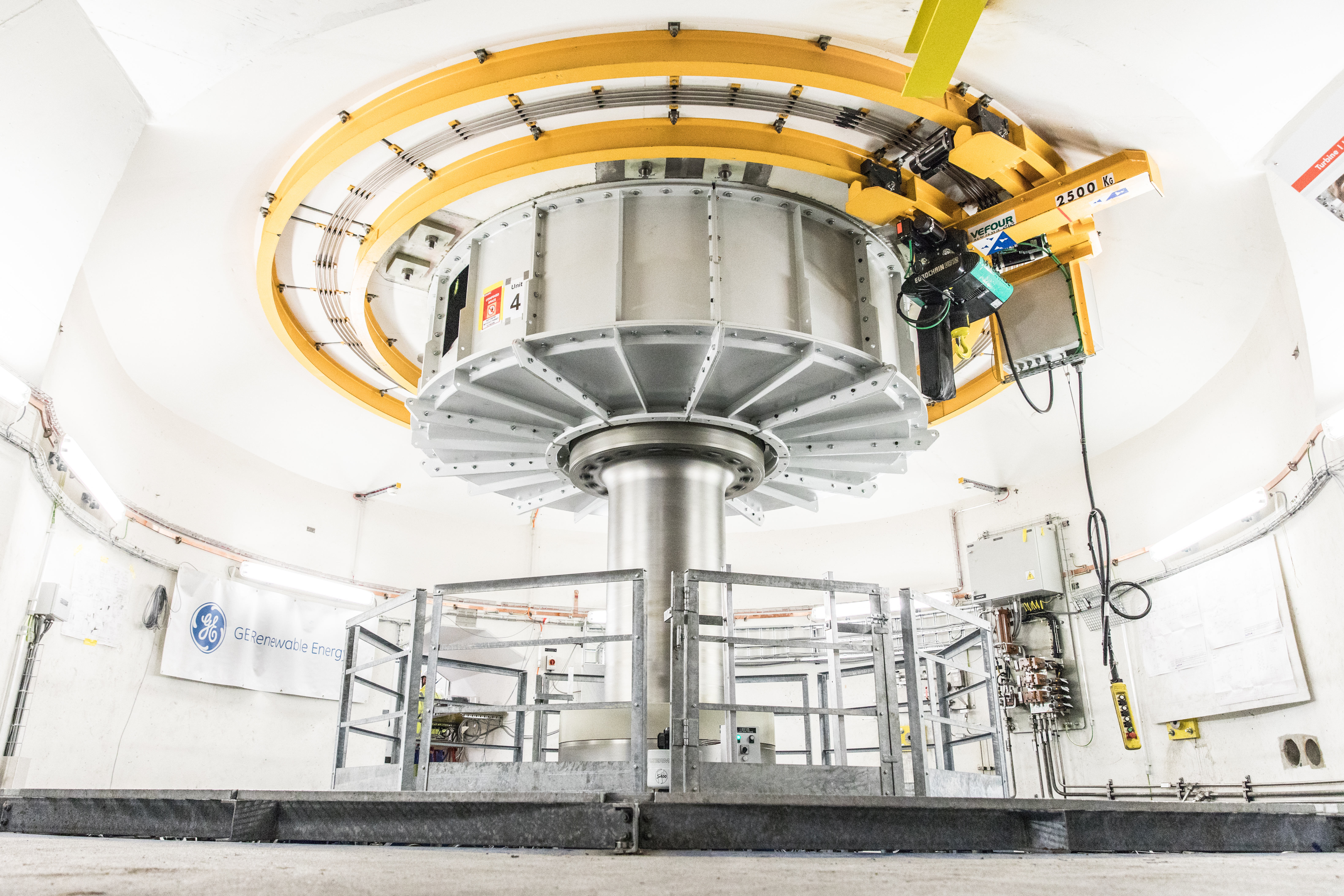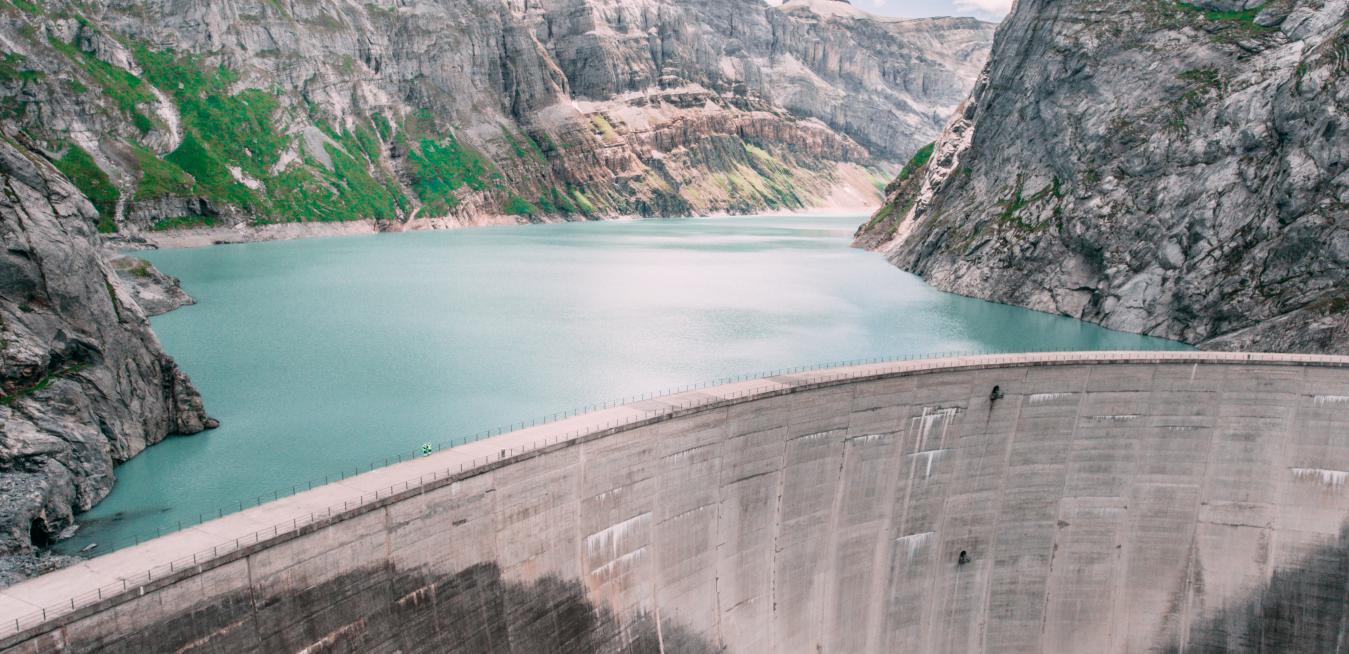Whatever battery you may have just imagined, think much, much bigger. This battery has output comparable to a nuclear power station and a capacity equivalent to 340,000 fully charged electric cars.
Equipped with four specially designed 250 Megawatt Francis pump turbines, this variable speed system displaces water between two mountain lakes 630 meters apart in altitude, and is capable of switching between 1,000 MW generation and 1,000 MW absorption in a matter of minutes. Controlled remotely by a team in Baden about 75 miles away, the system can start contributing power to the grid in as little as two minutes.
After a decade of planning, design, and construction in partnership with Axpo and KLL, the Linth-Limmern pump storage plant has been online for just over a year. Site Manager Martin Kech reflects on the experience of overseeing GE’s first variable speed hydro storage plant as a herculean task that required a global mindset: “All of the components came from all over the world, as well as our staff here on site. We worked several times in situations with even seventeen different languages... so it was quite a challenge to achieve our goal with all these different parameters.”
But through such unique challenges and technological breakthroughs, Linth-Limmern has laid a foundation for a technology providing power grids around the world with a clean, efficient large energy storage system helping to integrate more new renewable energy coming from Wind and Solar.
The Case for Hydropower Storage
Linth-Limmern’s significance as a pump storage plant isn’t simply rooted in its technical achievements. Switzerland is currently shifting its energy policy away from nuclear power in favor of renewable energy sources. And while the intermittent nature of wind and solar energy can cause power fluctuations, power storage systems can counterbalance these effects.
As GE Renewable Energy Managing Director Bill Armstrong put it, “on a grid, there is one rule: consumption must always be equal to production. If you don’t produce enough, it’s a blackout. If you produce too much, it’s wasted.” For these times that the wind isn’t blowing or the sun isn’t shining, a power storage system helps by quickly activating to meet demand; conversely, it also absorbs excess energy when it would otherwise result in power loss.

But why climb to such great extremes for a hydropower solution when there are battery-based power reserve systems? “What makes the biggest difference is scale,” GE Renewable Energy’s Head of Chief Engineers Office Alexander Schwery notes. “The huge quantity of energy that can be stored in a modern pump storage plant is orders of magnitude higher than what you would find in the world’s largest batteries.”
In a hydro pump storage plant like Linth-Limmern, the combination of a reservoir (25 million cubic meters) and a quartet of high-efficiency hydro storage units can supply the grid with 1,000 Megawatts of continuous power for up to 30 hours. Even some of the largest 100MW lithium ion battery systems supplying a tenth of the output can only do so for about an hour.
“Looking beyond scale,” he adds, “you must consider longevity. If batteries are well done... they might be able to store five, maybe ten times the energy that was used to produce them. With pump storage, the energy stored on energy investment is roughly 15 times higher, making it ecologically meaningful as well as highly efficient.” Putting this into perspective, any lithium ion batteries used in large power storage applications still have yet to prove their lifespan while hydropower assets have already proven their longevity to be measured in decades.
Unique Ventures and Massive Gains
Taking on any one of the project’s challenges individually – the permitting and planning, the newly conceived variable speed pump turbine technology, or installation in the remote, high-elevation site – would be an ambitious undertaking. To take them all on in the same project, however, required an almost mythic level of organization and skill.
“Under the circumstances we have here at Linth-Limmern, from the extremes of the high elevation and pressure, I never saw anything like it in my whole career... It was quite extraordinary” Kech recounts. “These are huge machines. Just a rotor for the generator is more than 300 tons. And this is a very challenging elevation that puts quite a high pressure on the turbine.” For the effort of installing four of these colossal machines in a cavern in the Alps to be worthwhile, the payoff would need to be truly extraordinary.
And this is where GE’s variable speed technology really delivers. In a fixed-speed hydro storage plant, strict power requirements limit the plant’s activities to a synchronous process in which both pumping and generating happen at a single, predetermined speed. Using double-fed induction machines and large power electronics, GE’s pump turbines can work intermittently and at lower speeds to give the power network greater flexibility, predictability, and efficiency.
This flexibility to work at variable speed has significant economic implications, as Armstrong explains: “Variable speed allows for adjusting pumping power by 30% and increases weighted efficiency in turbine mode by an average of 1%. Utilities are able to react fast and capture the lucrative sweet spots when prices of electricity are highest.” It also empowers utilities to sell ancillary services like frequency regulation – absorbing excess power from the grid to prevent waste – which presents an entirely new revenue stream.

Building an Efficient and Renewable Future
As Switzerland shifts away from nuclear power, it must also build an energy policy that confronts the effects of climate change – in 2018, the Aletsch Glacier receded by a staggering 10 meters over the summer. In as little as 50 years, this once perennial source of freshwater may not even exist. The need for an environmentally conscious energy mix is no longer a matter of speculation and debate.
“There is a mindset changing, and I think this is necessary, but also very late,” Kech muses. “I think we are at the eleventh hour, and that's why I'm also convinced about hydro energy. We are now in a time where things are changing rapidly that, for centuries, didn’t change at all. We have to be careful with our resources, in Switzerland and all over the world, so that we get the resources as we have for the next generation as well.” Groundbreaking projects like Linth-Limmern are testaments to the value and purpose of hydropower storage, as they prove such ecologically conscious energy solutions are technically competitive and economically viable.
“Our role, as industrials and utilities, is to advocate for this incredible source of energy that Hydropower is,” Armstrong offers. “We need to pursue our innovation and investments from which will stem new solutions and outcomes.” And it’s working: GE is currently developing similar hydropower storage plants globally, each tailored to the landscape and energy concerns of their respective environments. “Axpo and KLL were brave enough to take hydropower to new heights and we are proud in GE to be part of this adventure,” he added. “We’re ready to support many other utilities in the world to do the same.”





